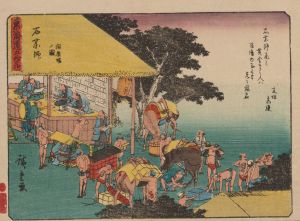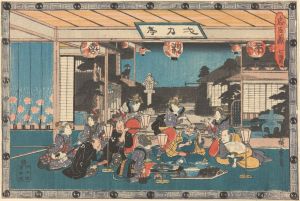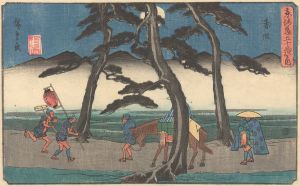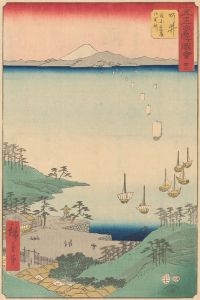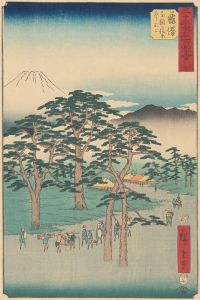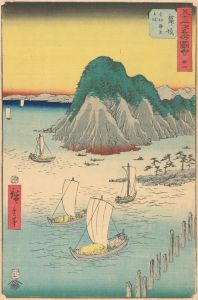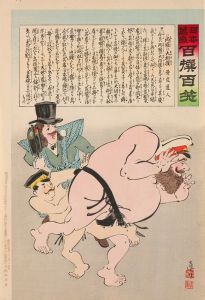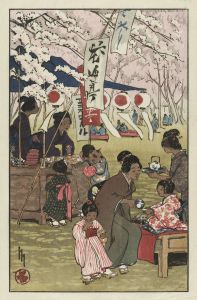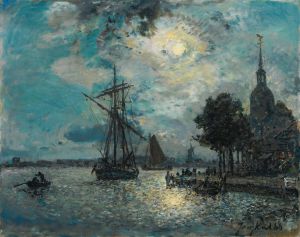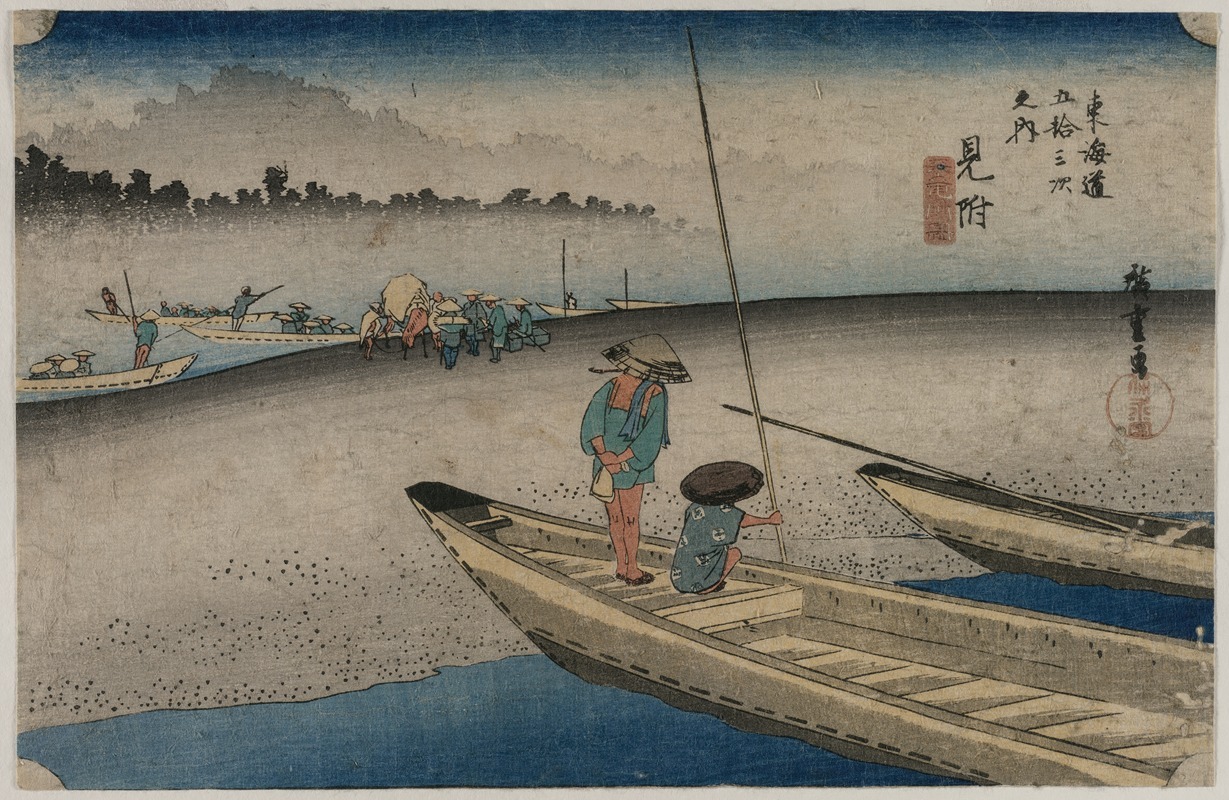
Picture of the Tenryu River near Mitsuke , from the series Fifty-Three Stations of the Tokaido
A hand-painted replica of Andō Hiroshige’s masterpiece Picture of the Tenryu River near Mitsuke , from the series Fifty-Three Stations of the Tokaido, meticulously crafted by professional artists to capture the true essence of the original. Each piece is created with museum-quality canvas and rare mineral pigments, carefully painted by experienced artists with delicate brushstrokes and rich, layered colors to perfectly recreate the texture of the original artwork. Unlike machine-printed reproductions, this hand-painted version brings the painting to life, infused with the artist’s emotions and skill in every stroke. Whether for personal collection or home decoration, it instantly elevates the artistic atmosphere of any space.
"Picture of the Tenryu River near Mitsuke" is a woodblock print by the renowned Japanese ukiyo-e artist Andō Hiroshige. This artwork is part of Hiroshige's celebrated series "Fifty-Three Stations of the Tokaido," which depicts the various post stations along the Tokaido road, a vital route connecting Edo (modern-day Tokyo) to Kyoto during the Edo period in Japan. The series was first published in the 1830s and is considered one of Hiroshige's masterpieces, showcasing his skill in landscape art and his ability to capture the essence of Japanese scenery.
The print portrays the Tenryu River, a significant waterway in Japan, near the Mitsuke station, which was the 28th station on the Tokaido road. The Tenryu River is known for its rapid currents and scenic beauty, and Hiroshige's depiction captures the dynamic interaction between nature and human activity. In the artwork, travelers are shown crossing the river, which was a common and sometimes challenging part of the journey along the Tokaido. The scene illustrates the use of boats for transportation, highlighting the importance of rivers in facilitating travel and trade during the Edo period.
Hiroshige's use of color and composition in this print is notable. He employs a limited color palette to evoke a sense of tranquility and harmony, typical of his style. The composition often features a balance between the natural landscape and human figures, emphasizing the coexistence of people and nature. The perspective used in the print draws the viewer's eye across the river, creating a sense of depth and movement.
The "Fifty-Three Stations of the Tokaido" series was highly popular in its time and remains influential in the art world. Hiroshige's work provided a visual record of the Tokaido road and its surroundings, offering insights into the daily life and travel experiences of people during the Edo period. His prints were not only appreciated for their aesthetic qualities but also served as a form of travel literature, allowing people to experience the journey vicariously.
Hiroshige's influence extends beyond Japan, impacting Western artists, particularly during the Japonisme movement in the late 19th and early 20th centuries. Artists such as Vincent van Gogh and Claude Monet admired and collected Japanese prints, incorporating elements of Hiroshige's style into their own work. The simplicity, use of color, and innovative compositions found in Hiroshige's prints contributed to the development of modern art movements.
Overall, "Picture of the Tenryu River near Mitsuke" exemplifies Hiroshige's mastery in capturing the beauty and essence of Japan's landscapes. It remains a significant work within the "Fifty-Three Stations of the Tokaido" series, reflecting the cultural and historical context of travel during the Edo period.





